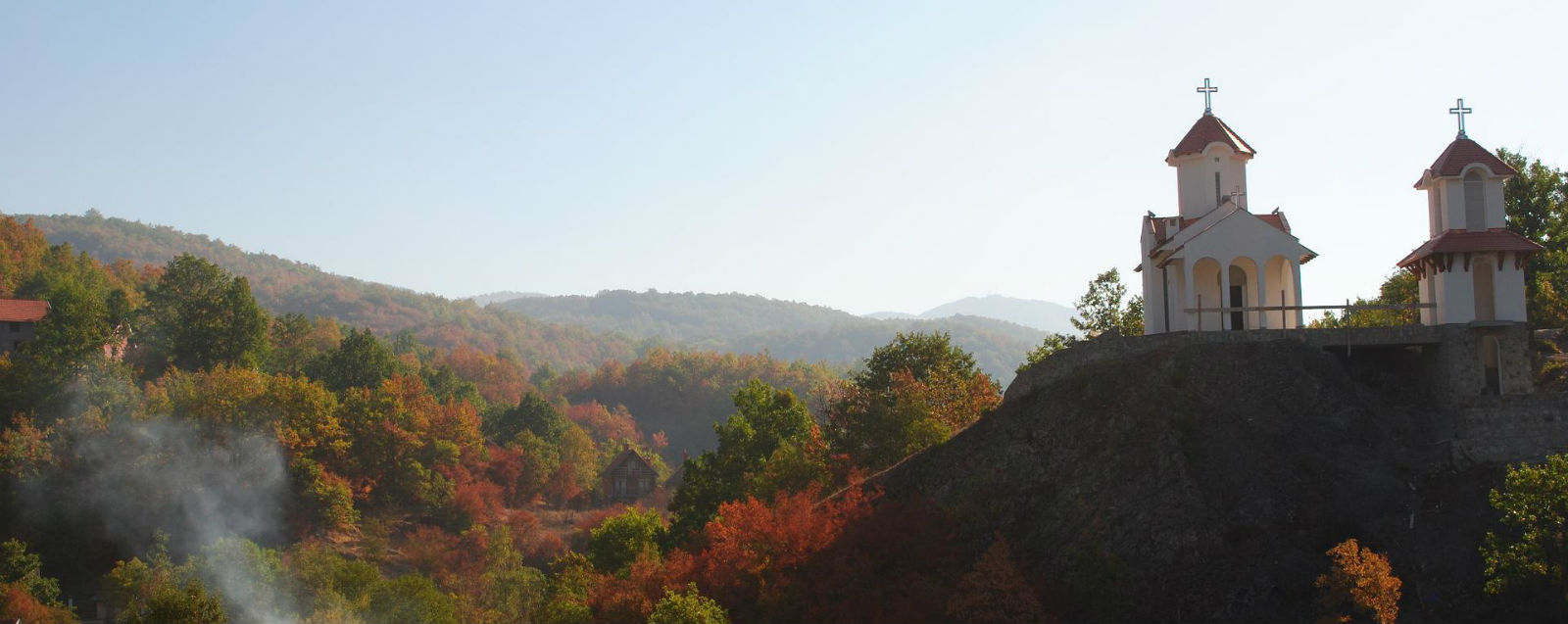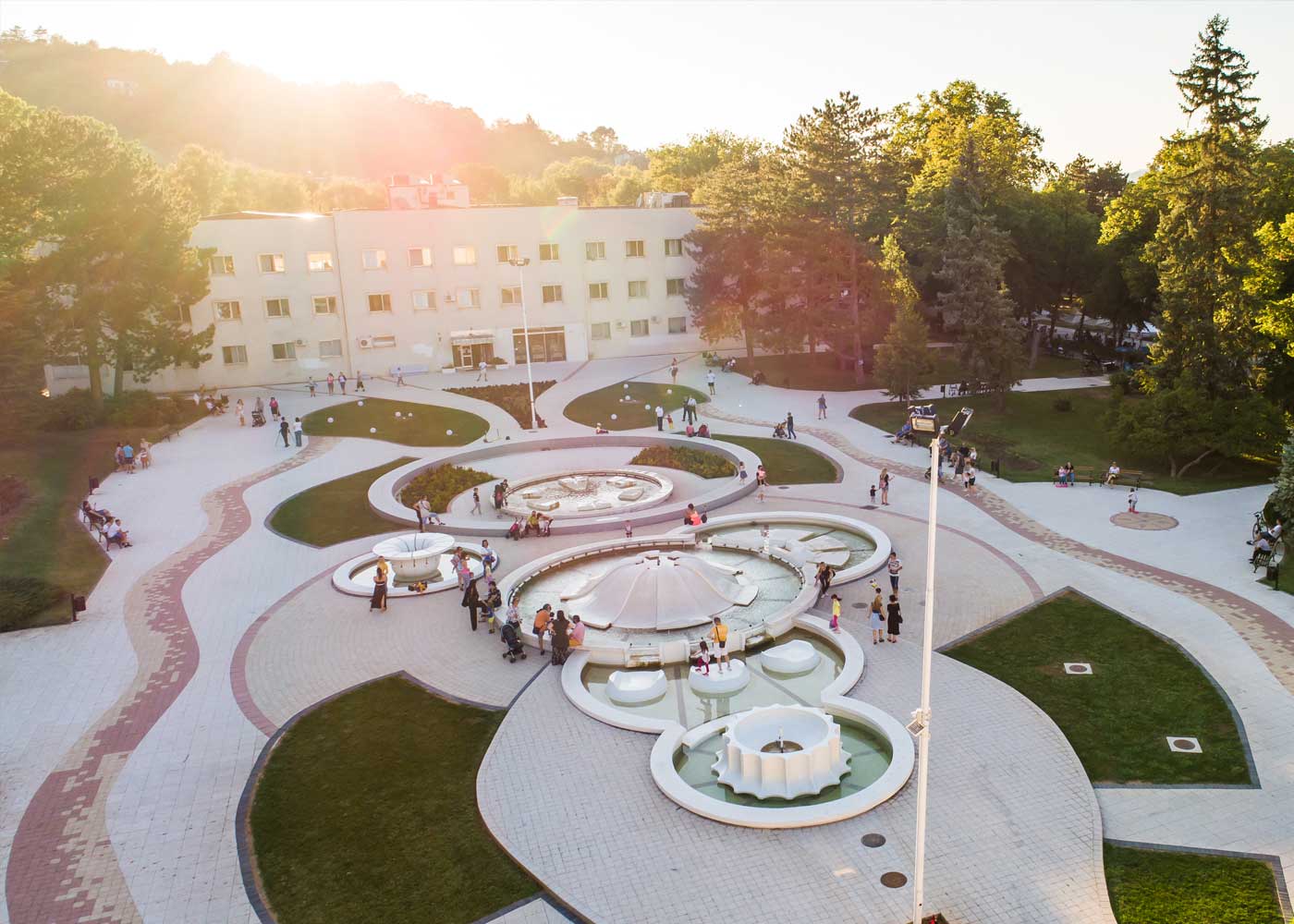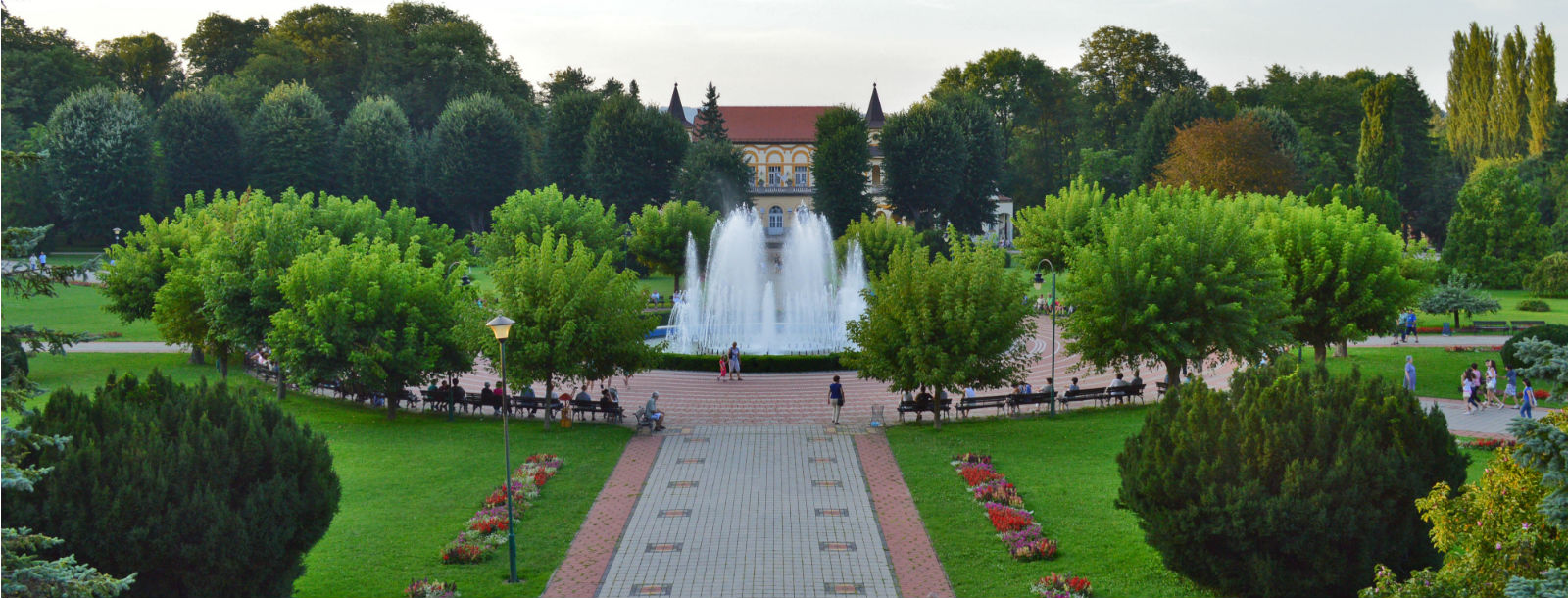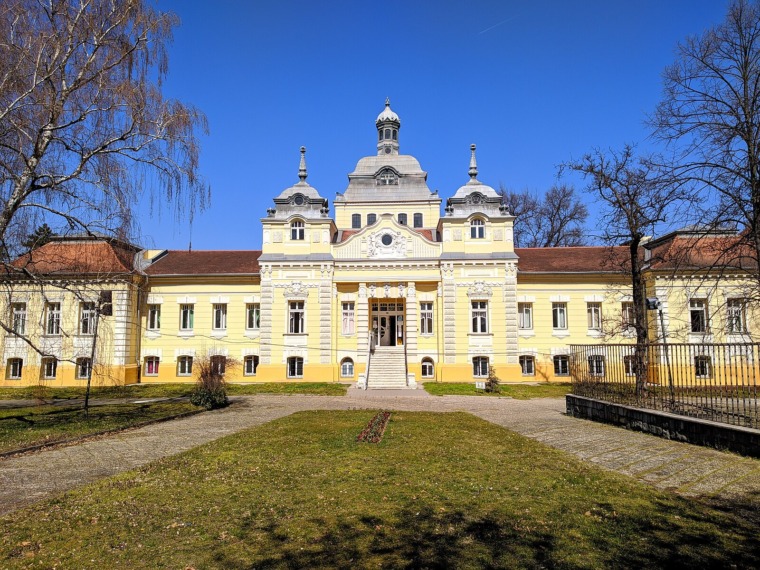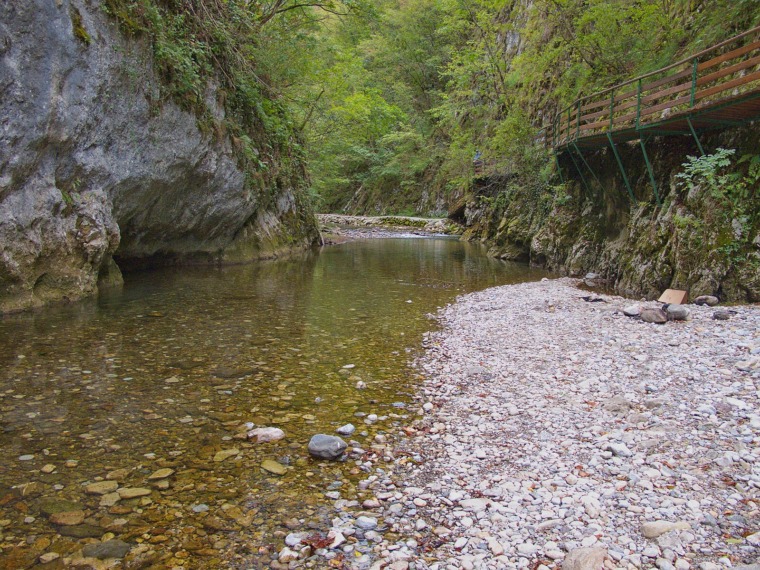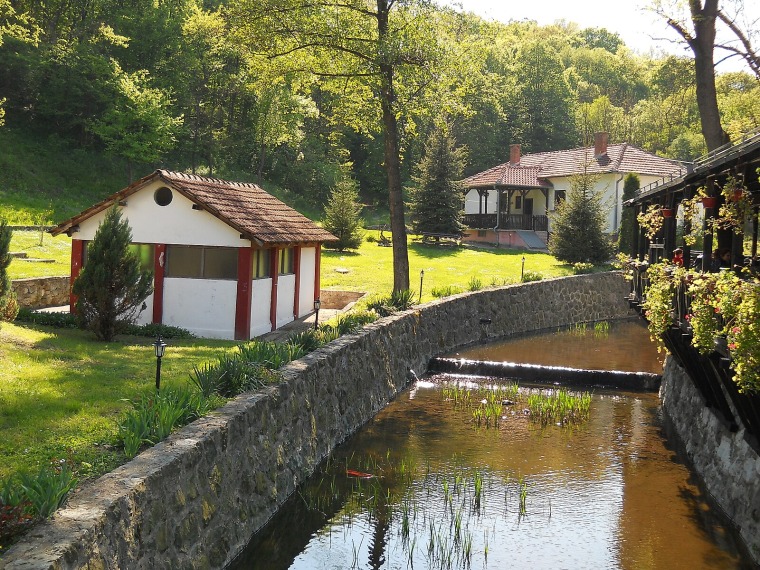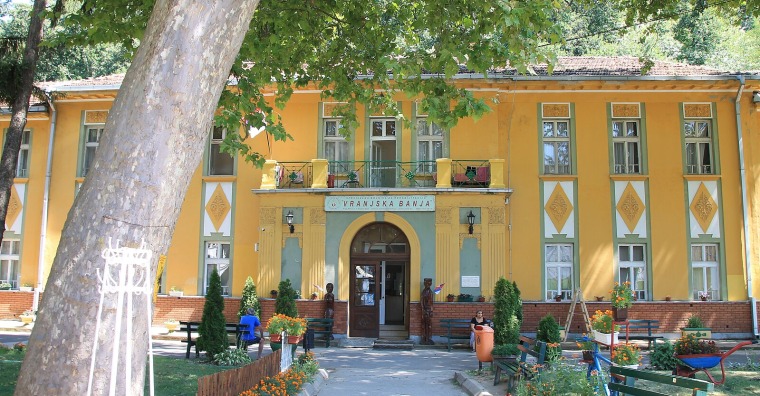Sokobanja, a spa set between two mountains, is a true oasis of fresh air with numerous springs of mineral water.
The ancient legend of healing power of water in Sokobanja speaks of the lord of Soko grad (eng. Hawk city) who, after having fell of the horse and having hurt himself, was lieing and waiting to die when he suddenly heard a sound of water and saw a hawk putting his broken wing into the spring.
His wing healed and the lord decided to take a bath in the spring and he instantly got cured.
The story about the healing water in the gorge between the mountains Ozren and Rtanj spread around the land.
Sokobanja was also mentioned by Constantine the Philosopher in the biography of Serbian despot Stefan Lazarević, the Turkish traveler Evliya Çelebi, the Turkish geographer Haji Khalifa, Vuk Karadžić and the traveler Felix Kanitz…
Sokobanja is located in Southeastern Serbia and it is one of the most popular spas in Serbia. During centuries it has had several names – Balnea, Banja (Spa), Velika Banja (Grand Spa), Aleksinačka Banja, Sokol Banja, and in 1859 it was named after the ancient city of Soko grad, that was destroyed in 1416.
Its unique position on the slopes of mountain Ozren and the proximity of Mt. Rtanj contributes to its unique characteristics.
Sokobanja is set in particular surroundings of the river Moravica, Bovan lake (sr. Bovansko jezero), and the largest waterfall in Serbia – Ripaljka. Sokobanja is surrounded by numerous cultural attractions and historical monuments like the ancient cities of Soko grad, Bovan and Vrmidža. A steep cliff with Sokograd, medieval stone fortress, rises above the spa.
The Residence of Prince Miloš Obrenović, built in the 19th century, is situated in the very center of Sokobanja, as well as the “hamam“, an old Turkish bath, from the 15th century.
The Turkish traveler Evliya Çelebi described the Turkish bath as “an impressive bath, in a good building with turrets covered with lead, with water fountain and rooms for bathing”. There is also “a women’s bath with hot water that must be mixed with cald water before being used”. At the time guests from Turkey and Middle East visited this spa.
Sokobanja is rich in natural curative thermo mineral springs and gas. Pure mountain air and mild continental climate contribute to its popularity. Sokobanja is well known for the prevention and treatment of numerous diseases.
However, Sokobanja will offer you lots of sports and recreation activities. Tennis, football, basketball courts and numerous recreational centers will meet all your needs for recreation and active vacation.
Rich hunting grounds on the slopes of the nearby mountains and the Moravica river, Bovan and Vrmidžan lakes abound in fish, thus offering extraordinary possibilities to everyone looking for active vacation.
Adventurists have numerous hiking tours and visits to caves at their disposal. All year long Sokobanja hosts numerous cultural and art manifestations, such as “Prva harmonika Srbije” (The First Accordion of Serbia), art colony “Sokograd” and “Banjsko kulturno leto” (Cultural Summer in Spa).
Today Sokobanja is one of the most visited destinations in Serbia and it is considered one of seven most attractive tourist destinations in Serbia.
What’s makes Sokobanja an ideal destination specialized in treatment and rehabilitation is beneficial influence of continental climate, high concentration of oxygen, ozone and negative ions in the air, absence of air polution, small number of foggy and windy days, and the presence of specific elements in the air and oligomineral waters.
How to get to the healing Sokobanja?
The largest cities near Sokobanja are Aleksinac (30 km), Boljevac (27km) and Knjaževac (47km). Sokobanja is connected to the Belgrade-Niš highway through Aleksinac and through it to all the other areas of Serbia.
Niš is only 60 km from the spa, and from the Bus station in Niš trips to Soko Banja are frequent. Belgrade is 240km from the spa, and there are also many buses towards it from the Belgrade bus station.
When you are already here, don’t miss…
Only 2 km from the Sokobanja is the medieval Soko grad (eng. Hawk city) also known as Sokolac.
The Sesalač, Cerjanska and Samar caves.
Related Articles
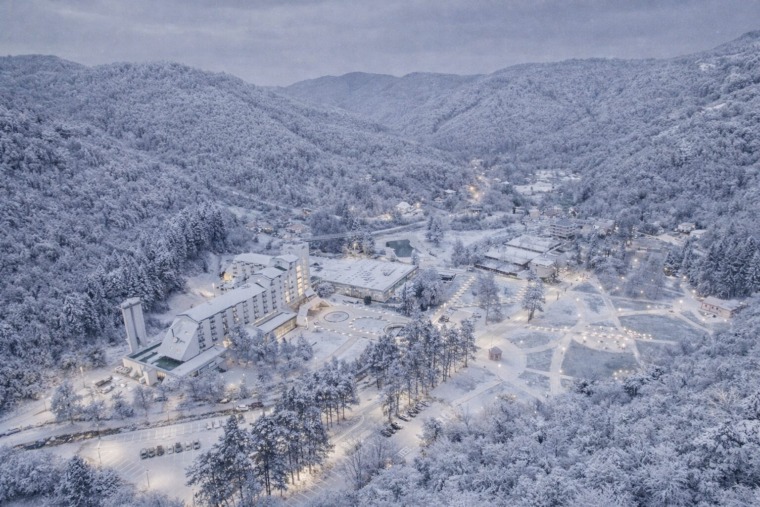
Kuršumlijska Banja: Serbia’s Quiet Winter Spa Escape
December 30, 2025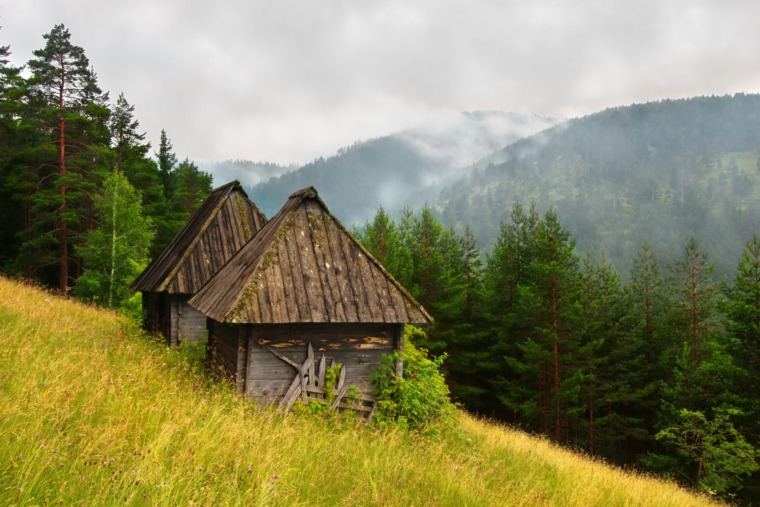
Active Holidays and SPA – Destination Ideas in Serbia
November 22, 2025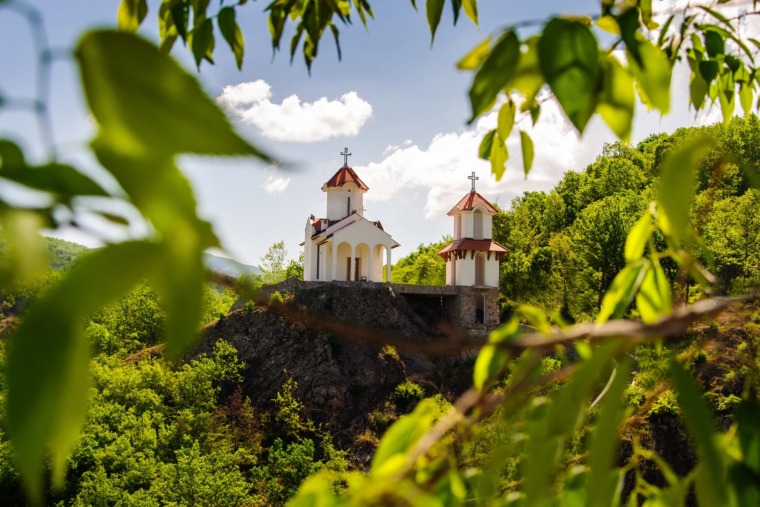
Prolom Banja – November Wellness and Mystical Landscapes
October 30, 2025



